There are tons of fine motor activities you can find for young children. But not as much information about fine motor activities for older children.
Children of all ages benefit from both fine motor and gross motor activities. Their bodies are designed to move! They need movement to learn balance, control and help develop their brain.
There are many ways to encourage the fine-tuning of your school aged child’s fine motor skills. There is something that will suit the interest of every child.
The fine motor activity ideas listed in this post also require and teach focus, self-control, attention to detail and patience. These are all skills that will benefit children their entire lives.
Note: This post contains affiliate links. If you click on an affiliate link and subsequently make a purchase from the linked website, I may receive a commission. Please read my affiliate disclosure for more information.
Painting 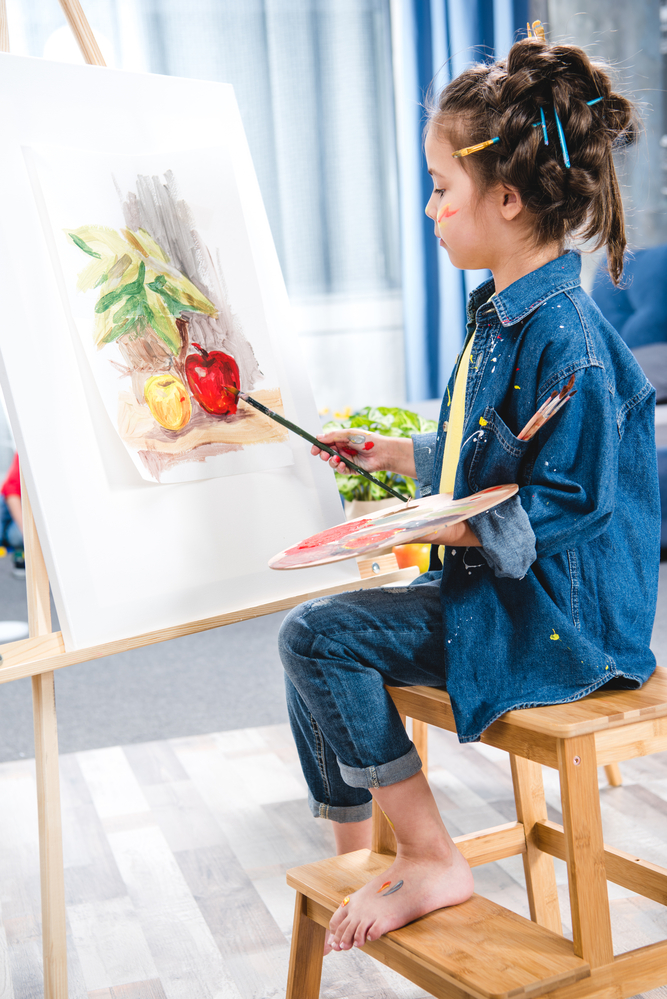
Visit your local hobby store and invest in watercolor, tempera and acrylic paints. Buy several sized brushes so your child can learn to manipulate each of the sizes and see how the outcome will vary depending on the size of brush used.
Visit this site for amazing painting project ideas for kids of all ages. Frame the finished product and display on a wall in your house. Your child will be proud that her painting is displayed and you will be grateful for an inexpensive piece of art work to decorate with,
Coloring
For quite some time now, there has been debate about coloring and whether it is good for children to learn to color within the lines. While I agree that children need to be free to create and draw their own pictures, I also feel that children need boundaries as well. 
Coloring within the lines requires both fine motor control and self-control. Learning this control when children are young will help them have better control of their lives when they are an adult.
If adult coloring books are all the rage right now, then coloring books can’t be all bad. If your child loves coloring, it can be quite a stress relieving activity.
Origami
Origami is a Japanese art of paper folding. The intricacy of this art makes origami definitely something to consider if your child needs fine motor practice or help with focus. 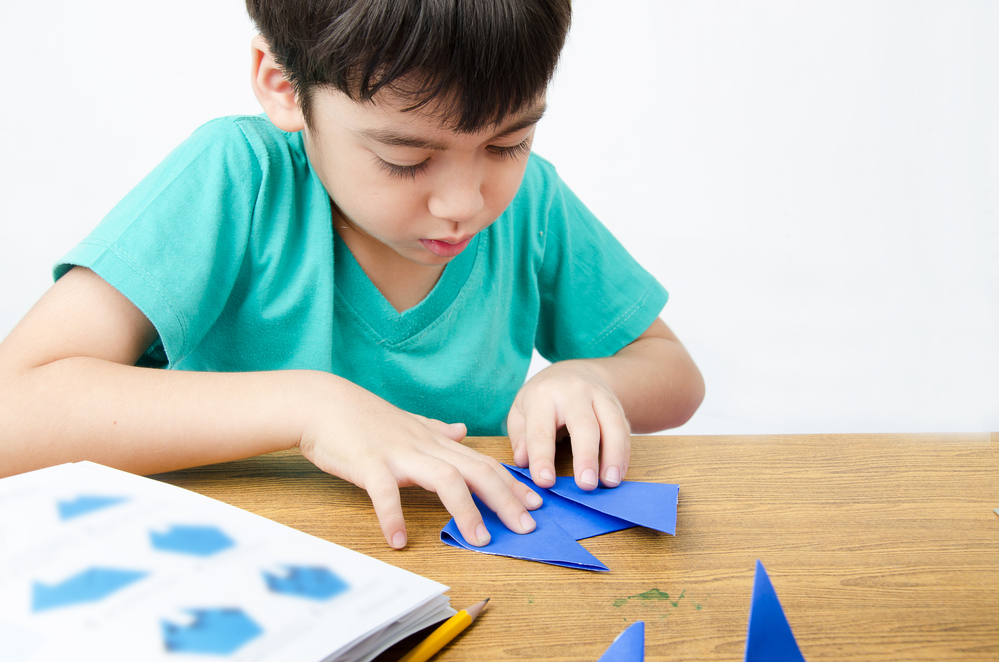
Search for “origami for kids” online and you will find an enormous amount of resources and websites that teach and provide activities for origami. There are even websites offering online one on one lessons with a live tutor.
Check out this website for tutorials, ideas, and videos on origami for kids.
Jewelry Making
Bracelets, necklaces, earrings, rings and other accessories such as headbands and bows are just a few ideas of jewelry your child can make.
Check out Oriental Trading Supply for jewelry making craft kits. This would be an easy way for your child to start learning this intricate art.
If you are up for it, let your child have a friendship bracelet making party. This kit will ensure everyone goes home with their own bracelet.
The list of materials you can use to make jewelry is endless.
Here are a few ideas to get you started: 
- Buttons
- Beads
- Beans
- Shells
- Chains
- Charms
- Leather
- Yarn
Crocheting or Knitting
When I was young, cross stitching was quite popular and I utilized my fine motor skills to make several projects featuring needle, thread and Aida cloth.
While I never learned to crochet or knit, I know that it has always been a quite popular activity. You can find knitting or crocheting kits online to introduce your child to this craft.
Crocheting or knitting ideas: 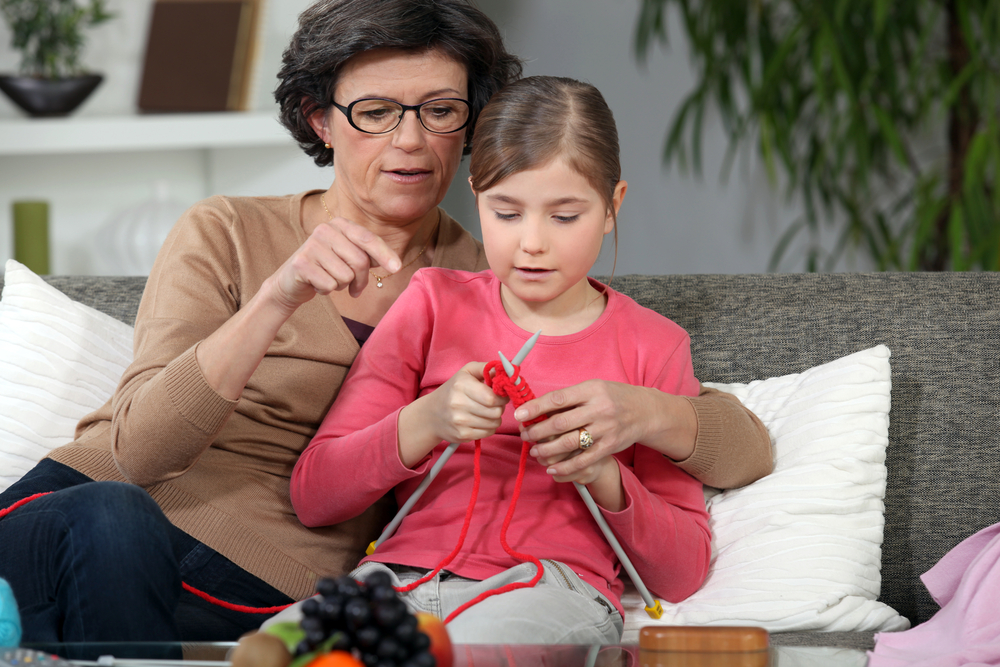
- Scarves
- Shawls
- Stocking Caps
- Ponchos
- Mittens
- Socks
- Handbags
- Purses
- Blankets
- Afghans
- Plush Toys
- Play Food
Playing a Musical Instrument
Playing musical instruments are my favorite fine motor activities for older children because I learned and practiced two different instruments as a child.
I was in second grade when I started taking private piano lessons. I took lessons for six years or so and competed in a piano competition each year that required I learn, memorize and perfect ten songs. 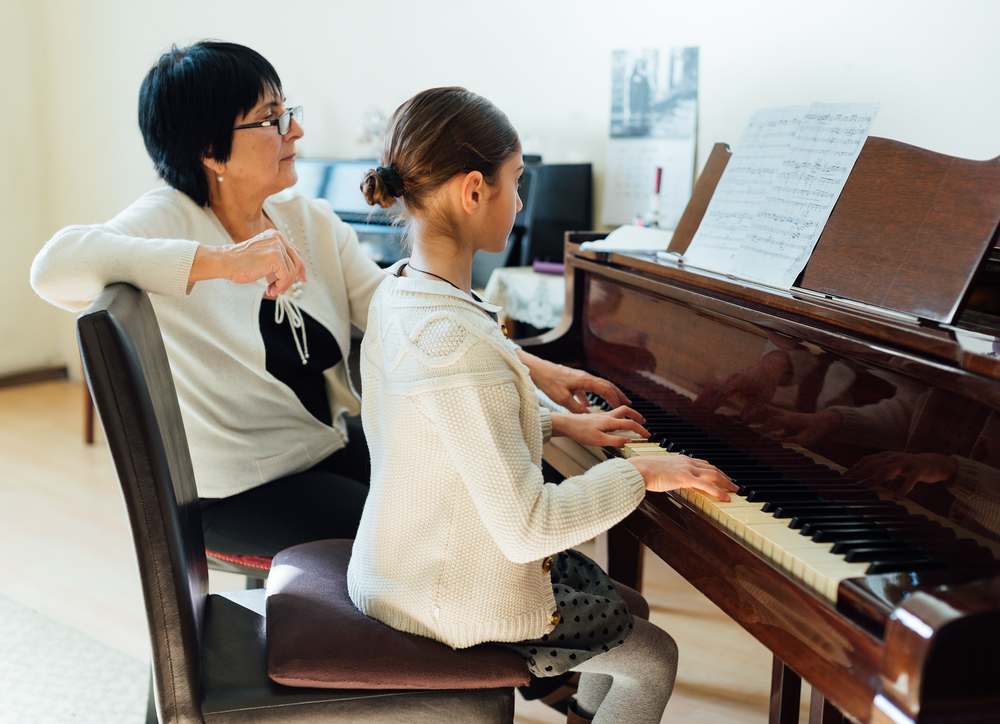
This took me several months to accomplish and my family was pretty tired of hearing the same songs over and over. However, they were my biggest fans and supporters. The lessons and skills I learned from this intense training was much more than physical skills.
When I was in fifth grade, I decided I wanted to learn to play the violin. This beautiful instrument is not so difficult to learn, but much more difficult to master. Figuring out how to manipulate the bow with one hand and press the correct spot on each string with the other hand requires fine motor coordination to the extreme.
Playing a musical instrument is also a wonderful way to enhance brain development. Learning how to read music, understand the rhythm and timing, and hit the correct notes is a lot for the brain to coordinate at one time.
It’s no wonder that as a teacher, I highly recommend children learn a musical instrument of some sort. It helps children on so many levels, socially and emotionally as well.
If your child is interested in playing an instrument, let him decide which one to learn. He will enjoy it more and be more unlikely to quit if he is allowed to pick the instrument he learns to play.
Calligraphy 
Calligraphy might seem to be a thing of the past in a world filled with digital fonts and graphic designs. But a search for “calligraphy for kids” on Google proves otherwise. There is something about this ancient art that is so beautiful and entrancing.
Calligraphy is a wonderful choice for fine motor practice because it requires learning how to hold the pen at the right angle so the correct pressure is applied to create the desired brush stroke.
Tools needed for calligraphy:
- Page. The writing surface you are using such as paper, wall, mug, etc.
- Ink. Any liquid color for application.
- Calligraphy Pen. Usually consists of a holder and a nib (tip of the pen).
Puzzles 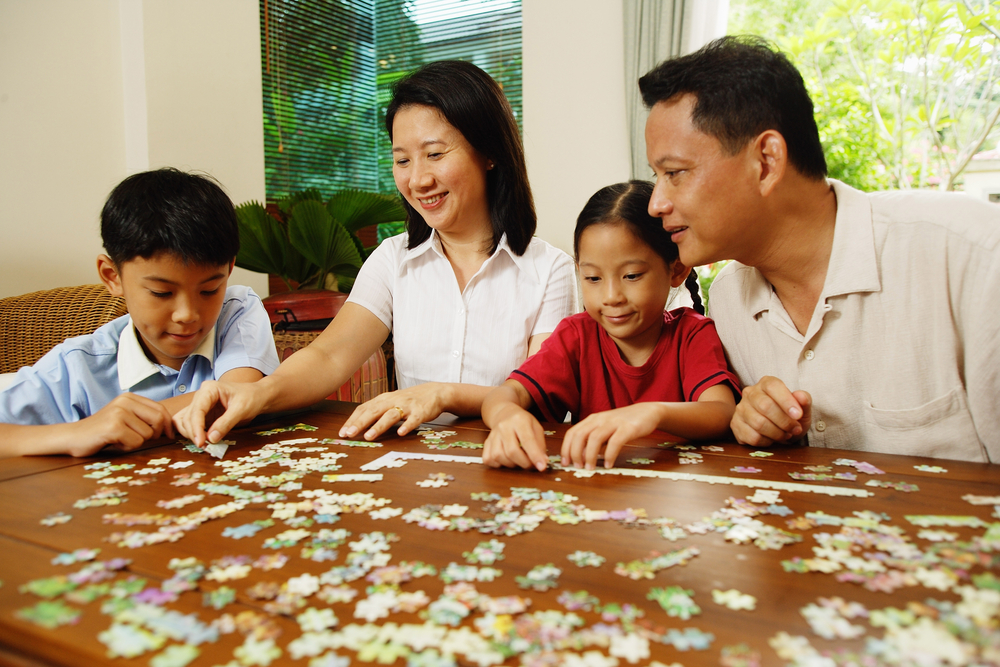
Whenever we visited my aunt and uncle’s house when I was young, there was usually a card table set up in the living room with an unfinished 500-1000 piece jigsaw puzzle. My brothers and I would often contribute some of our brain power to completing the masterpiece. Then the next time we came, there would be a different puzzle in need of completion.
Jigsaw puzzles are great for dexterity, focus and problem solving. It is also a project that the whole family can help with if everyone is interested.
Your child might even want to glue the completed puzzle, frame it and hang it on the wall.
Wood Working
If your child is seriously interested in learning all about wood working, you might want to check out this site. It is a club that sends your child a new wood working project each month. The first three sets include the tools your child will need to complete the projects.
There are other wood working kits, books, tutorial and resources available online as well. 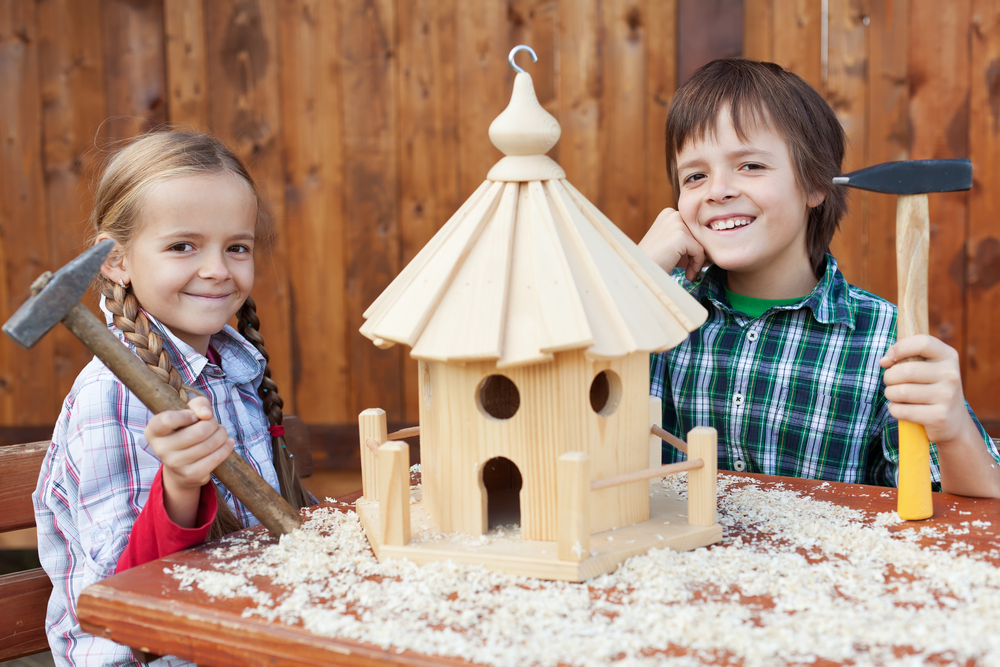
Wood Working Ideas:
- Picture Frame
- Bird House
- Coaster
- Box
- Shelf
- Caddy
- Book Ends
Model Kits
When I was in elementary school, we would assemble model rockets once a year and have a school wide launch. I remember more about the launch of my rocket than I do assembling it. I do remember it required constructing, gluing and painting. That was the extent of my model building because I wasn’t that interested in it.
Lots of kids are interested in building and assembling things, though. If your child is one of these kids, then model kits would be a great hobby for him to hone his fine motor and building skills.
My nephew loves assembling Lego models and has bought quite a few kits with his birthday money over the years. 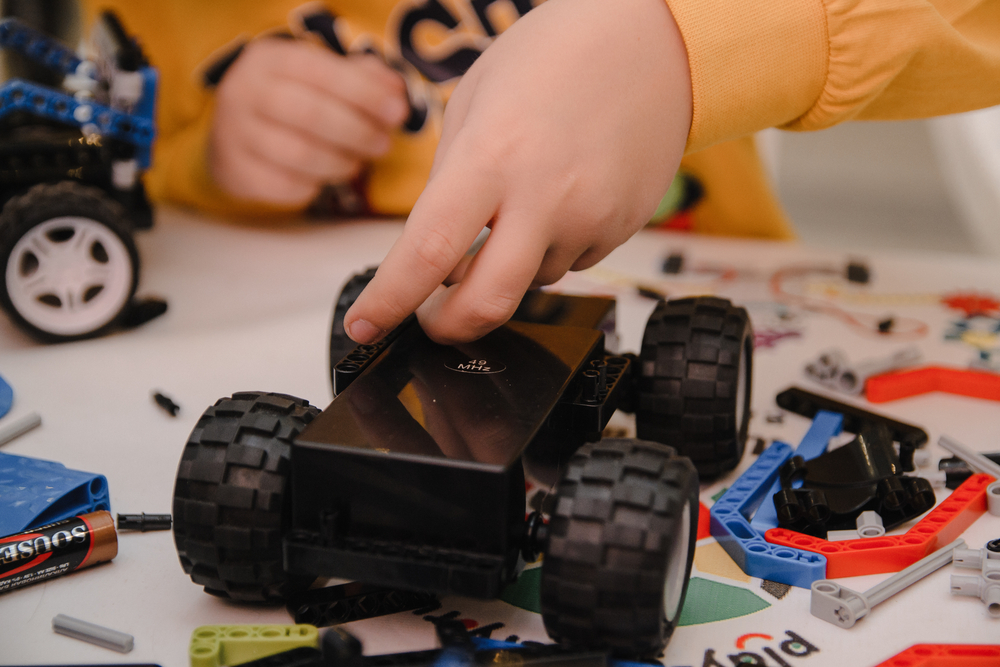
Other ideas for model kits:
- Cars
- Trucks
- Tractors
- Planes
- Trains
- Ships
- Boats
- Rockets
- Spaceships
- Houses
- Railroads
Use Your Local Resources
Contact local craft and sewing stores such as Michaels, JoAnn Fabrics and Hobby Lobby to see if they have classes for kids in any of the fine motor activities for older children mentioned in this article.
Check with your local schools, colleges, YMCAs or recreational centers to see if they offer any classes, lessons or tutoring in these activities.
There are always online videos and tutorials, but I think children benefit more if they can interact and learn from people they can bond and build relationships with in person.
Teach your own child if you are good at one of these activities and your child is willing to learn from you. It will be a great way to spend time with your child.
Encourage your child to persevere in learning and mastering whatever activities he chooses to pursue. There are so many opportunities for your child to discover his natural talents while also refining his fine motor skills.









Leave a Reply